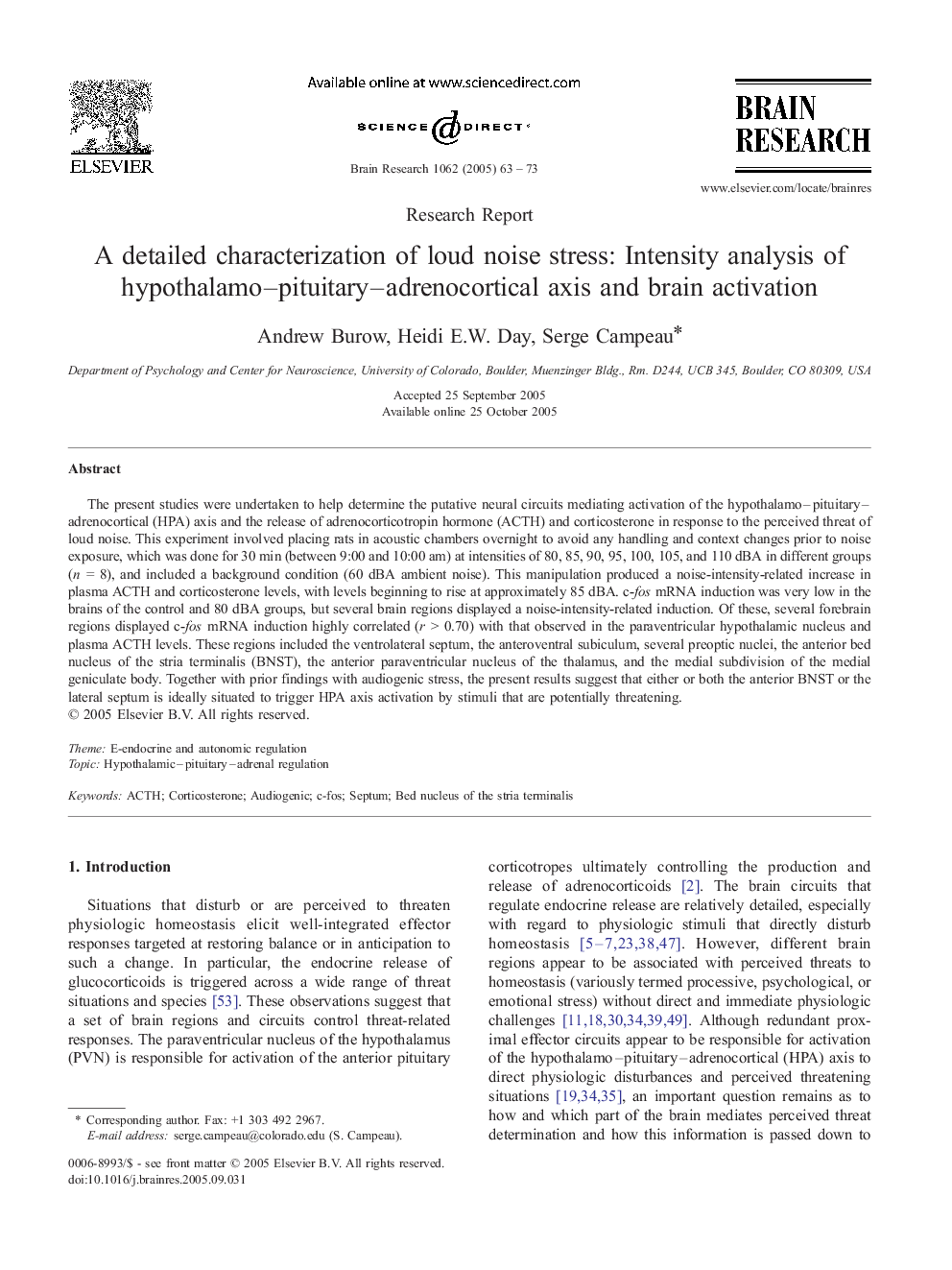| Article ID | Journal | Published Year | Pages | File Type |
|---|---|---|---|---|
| 9415806 | Brain Research | 2005 | 11 Pages |
Abstract
The present studies were undertaken to help determine the putative neural circuits mediating activation of the hypothalamo-pituitary-adrenocortical (HPA) axis and the release of adrenocorticotropin hormone (ACTH) and corticosterone in response to the perceived threat of loud noise. This experiment involved placing rats in acoustic chambers overnight to avoid any handling and context changes prior to noise exposure, which was done for 30 min (between 9:00 and 10:00 am) at intensities of 80, 85, 90, 95, 100, 105, and 110 dBA in different groups (n = 8), and included a background condition (60 dBA ambient noise). This manipulation produced a noise-intensity-related increase in plasma ACTH and corticosterone levels, with levels beginning to rise at approximately 85 dBA. c-fos mRNA induction was very low in the brains of the control and 80 dBA groups, but several brain regions displayed a noise-intensity-related induction. Of these, several forebrain regions displayed c-fos mRNA induction highly correlated (r > 0.70) with that observed in the paraventricular hypothalamic nucleus and plasma ACTH levels. These regions included the ventrolateral septum, the anteroventral subiculum, several preoptic nuclei, the anterior bed nucleus of the stria terminalis (BNST), the anterior paraventricular nucleus of the thalamus, and the medial subdivision of the medial geniculate body. Together with prior findings with audiogenic stress, the present results suggest that either or both the anterior BNST or the lateral septum is ideally situated to trigger HPA axis activation by stimuli that are potentially threatening.
Keywords
Related Topics
Life Sciences
Neuroscience
Neuroscience (General)
Authors
Andrew Burow, Heidi E.W. Day, Serge Campeau,
